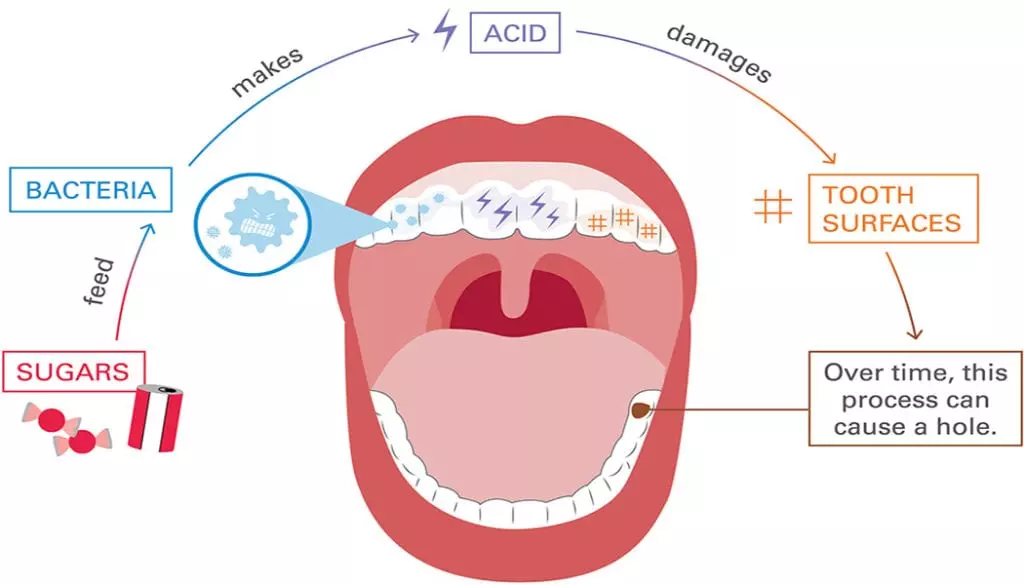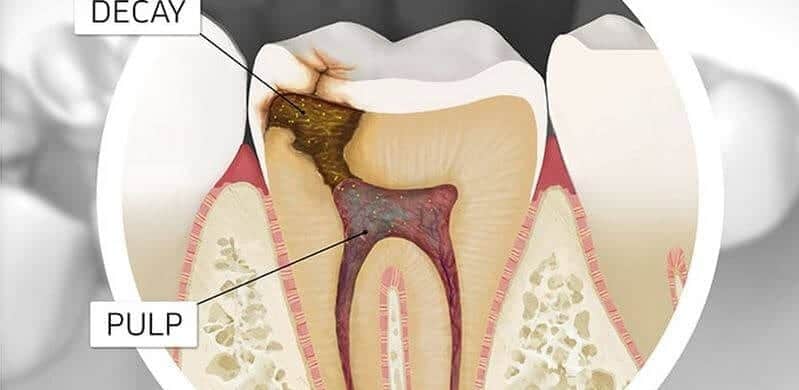Just as we need to take care of our teeth as adults, we also need to take care of our teeth as children (or help our children take care of their teeth). Even though baby teeth will eventually fall out, they are extremely important to your child’s health and development. Ensuring that your infant starts off with good oral care will help to prevent future problems, and will help keep their smile healthy for decades to come. But what are the different types of tooth decay that affect children and how can you prevent them? Let’s find out:
What is tooth decay?
Before we get into how tooth decay happens, why don’t we define exactly what it is.
The hard outer layer of our teeth is called enamel. Both our childhood teeth and adult teeth have enamel, but the ename on our baby teeth is much thinner than on our adult teeth. For this reason, they are more susceptible to decay. When decay happens, our teeth get small holes in them, and this is known as a cavity.

Types of tooth decay:
When tooth decay happens it happens in stages:
Stage 1: White spots.
- During this stage you will start to notice chalky white areas on the surface of the tooth. These areas are caused by plaque buildup and a loss of calcium. During this stage of tooth decay, you can take precautionary measures to reverse the damage and prevent decay.
Stage 2: Decay of enamel.
- This is the stage where the enamel beneath the surface of the tooth begins to break down. Once this process starts, lesions can form on the tooth. The more the tooth decays, the more it becomes at risk of breaking.
Stage 3: Decay of dentin.
- If a cavity goes untreated, the next stage is dentin decay. During this time, bacteria and acid buildup, continuing to dissolve the enamel of the teeth and continuing to decay the tooth. Once this decay reaches the dentin (the part in between the pulp and the enamel), sharp pain is usually the result.
Stage 4: The pulp stage.
- The pulp is the center of your tooth. If decay reaches the pulp of a tooth, it can become infected with bacteria and can lead to pus buildup. furthermore, it can kill the nerve cells within the tooth, which ultimately leads to persistent pain.
Stage 5: Infection.
- If the tooth is still not dealth with after bacteria has reached the pulp, it can then travel to the root tip. At this point there becomes a serious risk of bone infection, as well as swelling of the tongue and gums. Eventually the tooth may be lost.
What causes tooth decay in your children?
Tooth decay happens when bacteria builds up in the mouth. More specifically, it occurs when foods that contain carbohydrates are left to sit on the teeth. This can include common foods eaten by children including milk, candy, juices, cereals, and breads. The combinations of food particles, bacteria, acid, and saliva cause plaque to build up on the teeth, which can eventually lead to a cavity.
Is your child at risk of tooth decay?
Your child may be at risk of tooth decay if:
- They have high levels of bacteria in their mouths.
- Their diet consists of a lot of sugars and starches.
- Their diet lacks appropriate amounts of water.
- They have poor oral hygiene
- They experience more saliva flow than usual.
So what can you do to prevent childhood tooth decay?
The good news is that childhood tooth decay is not inevitable. In other words, it can be prevented. Here are some take away tips to help you prevent childhood tooth decay.
- Brush your child’s teeth 2-3 times a day with a fluoride toothpaste. You should brush their teeth, tongue, and gums, Brushing should start as soon as you see their first tooth starting to come in.
- After the age of 2, your child’s brushing routine should include regular flossing.
- Limit snacks and foods that are high in carbohydrates and sugars. Cookies, candies and other sugar-filled snacks will increase their likelyhood of developing a cavity.
- Don’t let your child share utensils, straws, or other items with other children or people. this can lead to a transfer of bacteria, which can increase their risk of developing a cavity.
- Never let your child have a bottle of milk or juice overnight. Water only for bedtime routines.
Finally, schedule regular checkups with your child’s dentist. A dentist will be able to spot tooth decay before it becomes a problem, and it will be able to exactly what the concern is stemming from and what you can do to prevent it from worsening.

